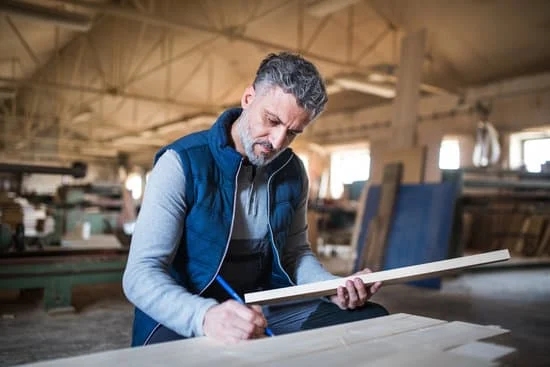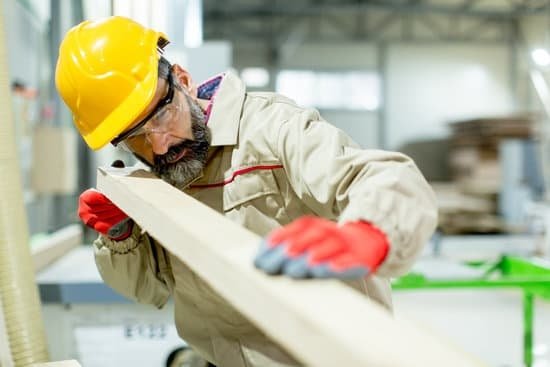When it comes to fine woodworking projects, selecting the right table saw blade can make a significant difference in the quality and precision of your craftsmanship. In this Fine Woodworking Table Saw Blade Review, we will delve into the essential factors to consider when choosing a table saw blade specifically tailored for intricate woodworking tasks.
Whether you are working on rip-cuts, cross-cuts, or intricate specialty designs, having the appropriate blade can elevate your work to a whole new level.
Different types of table saw blades are designed to cater to specific cutting needs in fine woodworking. From rip-cut blades that excel in cutting along the wood grain to cross-cut blades that provide clean and precise cuts across the grain, understanding the variations can enhance the accuracy of your projects. Additionally, combination blades offer versatility by allowing both rip and cross-cuts with one blade, while specialty blades cater to unique woodworking requirements.
When selecting a table saw blade for fine woodworking projects, several factors come into play. The material of the blade influences its durability and sharpness retention, while tooth count determines the speed and smoothness of cuts. Blade size also plays a crucial role in ensuring compatibility with your table saw and achieving optimal results. By considering these factors, you can choose a blade that suits your specific woodworking needs and enhances the overall quality of your creations.
Types of Table Saw Blades
Table saw blades play a crucial role in woodworking projects, especially when it comes to fine woodworking. Choosing the right type of table saw blade can make a significant difference in the quality and precision of your cuts.
For fine woodworking projects, there are several types of table saw blades to consider, each with its unique features and advantages. Whether you need a blade for rip-cutting, cross-cutting, or a combination of both, selecting the appropriate type is essential for achieving professional results.
One popular type of table saw blade for fine woodworking is the rip-cut blade. Designed specifically for making long cuts parallel to the wood grain, rip-cut blades typically have fewer teeth with large gullets to remove material quickly. This type of blade is ideal for cutting boards lengthwise or making straight-line cuts on hardwoods.
In contrast, cross-cut blades are designed for cutting across the wood grain, providing clean and precise cuts with minimal tear-out. These blades have more teeth than rip-cut blades and feature alternate top bevel (ATB) or high-ATB tooth configurations for scoring the wood fibers before making the cut. Cross-cut blades are perfect for cutting plywood, hardwoods, and other materials where a smooth finish is paramount.
| Types of Table Saw Blades | Description |
|---|---|
| Rip-Cut Blade | Designed for long cuts parallel to wood grain with fewer teeth. |
| Cross-Cut Blade | Designed for clean cuts across the wood grain with more teeth. |
Factors to Consider
When it comes to fine woodworking projects, selecting the right table saw blade is crucial for achieving precision cuts and achieving professional results. There are several factors to consider when choosing a table saw blade specifically designed for fine woodworking. Understanding these factors can make a significant difference in the quality of your finished projects.
Here are some key factors to consider when selecting a table saw blade for fine woodworking:
- Blade Material: The material of the blade plays a significant role in the quality of cuts it can produce. Blades made from high-quality carbide tend to be more durable and retain sharpness longer, making them ideal for fine woodworking projects.
- Tooth Count: The number of teeth on a blade determines the smoothness and speed of the cut. For fine woodworking, blades with a higher tooth count (40-80 teeth) typically produce cleaner cuts with minimal tear-out, especially when working with hardwoods or veneered boards.
- Blade Size: The size of the blade also matters when it comes to fine woodworking. Depending on the thickness of the material you are cutting, you may need a different diameter blade. Additionally, choosing the right kerf (width of cut) is essential for precision work.
Considering these factors will help you choose the best table saw blade for your fine woodworking projects, ensuring that you achieve accurate cuts and professional-looking results. Remember to do thorough research and read reviews like this Fine Woodworking Table Saw Blade Review before making your purchase decision. A high-quality table saw blade can make all the difference in your woodworking endeavors.
Blade Sharpening and Maintenance
Proper Blade Maintenance
To ensure optimal performance and longevity of your table saw blade for fine woodworking projects, it is crucial to regularly maintain and sharpen the blade. One of the key aspects of blade maintenance is keeping it clean. Resin buildup from wood can negatively impact the cutting performance of the blade. Use a cleaning solution specifically designed for saw blades to remove any residue and keep the blade in top condition.
Blade Sharpening Techniques
Over time, a table saw blade will inevitably dull with continued use. When this happens, it is essential to sharpen the blade to maintain precise cuts. There are various methods for sharpening blades, including using a sharpening stone or a dedicated sharpening machine. It is important to follow the manufacturer’s recommendations for sharpening angles and techniques to ensure that the blade is properly sharpened without causing damage.
Maintaining Blade Balance
In addition to keeping the blade sharp, it is also important to maintain its balance for smooth and accurate cuts. Imbalanced blades can lead to vibration, uneven cuts, and even potential safety hazards. To check if your table saw blade is balanced, you can use a specialized balancing tool designed for this purpose.
If you notice any imbalance, it is essential to correct it before using the blade again. Regularly checking and correcting the balance of your table saw blade will help prolong its lifespan and ensure consistent cutting performance for all your fine woodworking projects.
Conclusion
In conclusion, selecting the right table saw blade is crucial for achieving high-quality results in fine woodworking projects. Whether you are working on rip-cuts, cross-cuts, or intricate specialty cuts, choosing the appropriate blade can make a significant difference in the final outcome of your project. Considering factors such as blade material, tooth count, and size will help you make an informed decision when browsing through the wide variety of options available in the market.
When it comes to fine woodworking, precision and accuracy are key elements that should not be compromised. Therefore, investing in a top-quality table saw blade is essential to ensure clean cuts and smooth finishes on your workpieces. Conducting a thorough fine woodworking table saw blade review can provide valuable insights into the performance and durability of different blades, helping you select the one that best suits your specific project requirements.
In essence, proper maintenance and sharpening of your table saw blade are also crucial aspects to consider for prolonged usage and optimal performance. By following recommended tips and techniques for maintaining your blade in top condition, you can extend its lifespan and continue producing exquisite woodworking pieces with ease. Remember that a well-chosen and well-maintained table saw blade is a valuable asset in any woodworker’s toolkit.
Frequently Asked Questions
What Saw Blade Is Best for Fine Cuts?
The best saw blade for fine cuts is usually a high-tooth-count blade with a higher TPI (teeth per inch) count. This type of blade produces smoother cuts with minimal tear-out, perfect for achieving precise and clean cuts in woodworking projects.
Should I Use a Thin KERF Table Saw Blade?
Using a thin kerf table saw blade has its benefits, especially when cutting thinner materials or trying to minimize material waste. A thin kerf blade removes less material during each cut, resulting in reduced waste and making it easier to feed through the saw.
What Is the Difference Between Fine and Coarse Saw Blades?
The main difference between fine and coarse saw blades lies in the number of teeth on the blade and their size. Fine blades have more teeth per inch, which allows for smoother and cleaner cuts, while coarse blades have fewer and larger teeth aimed at faster cutting speeds but with rougher results.

Hi everyone! I’m a woodworker and blogger, and this is my woodworking blog. In my blog, I share tips and tricks for woodworkers of all skill levels, as well as project ideas that you can try yourself.





